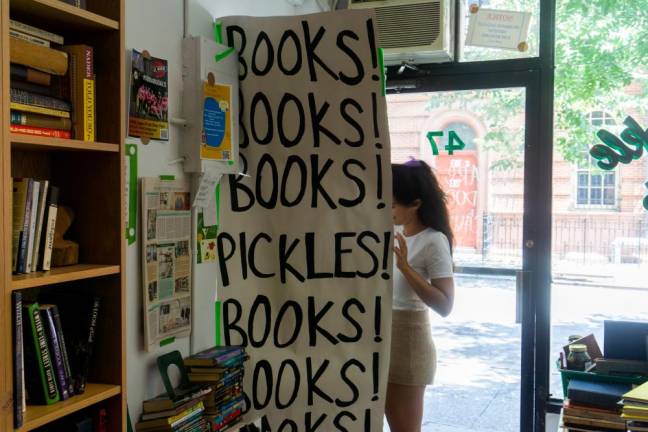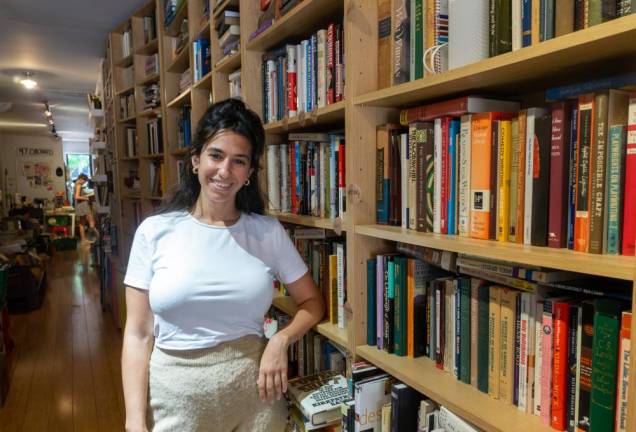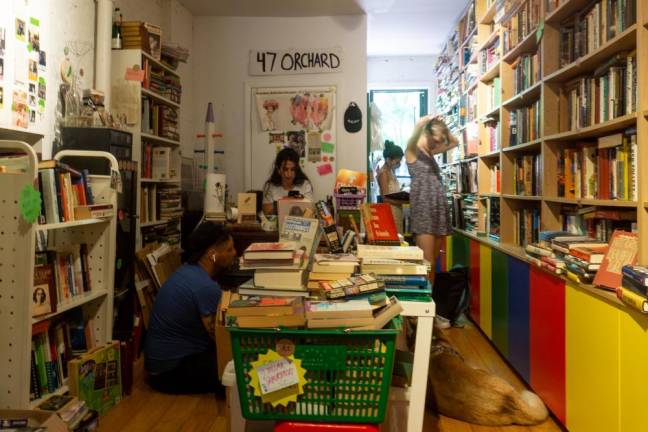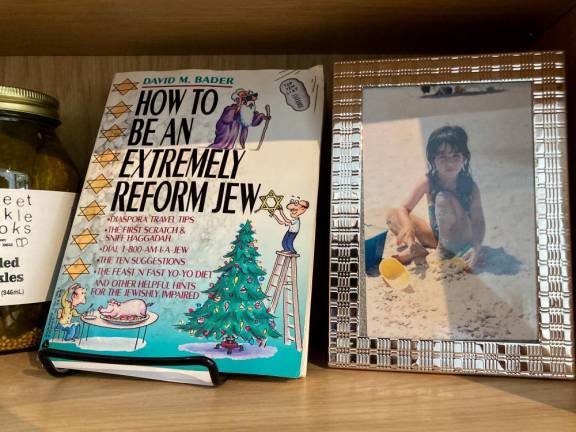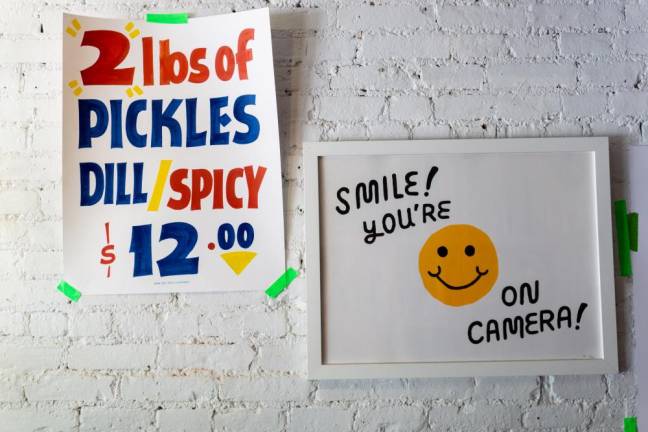Sweet Pickle Books Preserves LES History
How “used books and new pickles” continue an Orchard Street tradition
The shrine contains four objects: a bottle, a jar, a book, and a photograph. The books, pickles, cassettes, VHS tapes, mugs, and bottle openers may shift across shelves, tables, and piles but these four items stay fixed in Sweet Pickle Books on Orchard Street.
Sweet Pickle Books was opened in November 2020 by Leigh Altshuler, a 29-year-old Jewish woman from Parkland, Florida. She moved to New York City after college, worked in communications for a design agency, Strand Book Store and an immersive theater company. When the COVID-19 pandemic left her jobless, she put her life savings into opening a store that would sell “used books and new pickles.”
“The fun is in the mess,” said Altshuler. And she is right. The store is an evolving, anarchic, brand-new-yet-feels-lived-in-forever space. The walls are festooned with handwritten signs and photographs. The book selection is joyfully haphazard. There is a free bin, a $2 bin, and a pay-what-you-want bin. But the items in the shrine are not for sale.
The Bottle
The bottle is made of clear patterned glass with a stopper. It belonged to Altshuler’s great-grandmother. Althsuler’s ancestors were Jewish immigrants from Russia and Poland who made their way to New York City. Her great-grandfather even owned a bakery in Flatbush, Brooklyn. As a child, she would frequently visit the city to see extended family, which gave her a deep knowledge of the city’s Jewish legacy.
“[The Lower East Side] is a place that I found a lot of interest in,” said Altshuler. “I think when you find something that you’re really interested in it encourages you to learn more about it and protect it and preserve it.”
The Jar
Althsuler takes the word “preserve” literally. The enshrined jar is the first jar of pickles she had sealed and put up for sale. When she did, she continued a tradition of Jewish people making pickles in the Lower East Side. In 1900 there were close to 3,000 pickle vendors in the city. Essex and Ludlow Streets were called the “pickle district.” World-famous pickle vendor Guss’ got started just around the corner from Altshuler. Today, Sweet Pickle Books and The Pickle Guys may be all that is left.
“It’s really about the history of this neighborhood,” said Altshuler. “Something that everyday when someone’s like, ‘Pickles and books, what?’ I can explain to them the history of pickles in the Lower East Side.”
The Book
Next to the bottle and jar is a large, tattered book entitled “How to be an Extremely Reform Jew” by David M. Bader. On the cover, Moses peeks out behind a pair of sunglasses to see a stone tablet engraved with the words, “Top Ten List.” A bespectacled man smilingly places a star of David atop a Christmas tree. And a puzzled diner contemplates a whole pig on a platter.
The book came from Altshuler’s mother, who instilled in her daughter a love for reading and pickles. The two of them would watch the 1988 film “Crossing Delancey,” a Jewish rom-com about a bookseller and a pickle vendor.
“I always grew up with my mom reading and it was a big part of my life,” said Altshuler. “We were a big Dr. Seuss family growing up. It was something that was just really important to me.”
The Photograph
A young girl with dark, long hair stares wistfully out of the frame. She is sitting on sand, a spade in her left hand and beach toys to her right. It feels like it belongs in a living room, not in a place of business. But to Altshuler, that’s the point. This photo of her as a child distills her goal for the store: to let people into her life.
“I hear from my friends that there’s so much of me in here,” said Altshuler. “I think as long as I can do that, then that’s great. Not because I have the best taste, but because it’s really a labor of love.”
The photo was a treasure Altshuler found tucked away in one of her mother’s books. Finding objects in the pages has been a pastime of hers since 2017 when she worked at Strand Book Store. In an interview that same year with Gothamist she talked about her joy finding things inside of used books saying, “It’s interesting to see where the books come from. It’s really special to see not just the story you’re reading in the book, but also [the story of] the book itself.”
At Sweet Pickle Books, Altshuler keeps a special drawer full of these found items: recipes, photographs, receipts. She considers them connections to the people of the past, a text on top of the text.
“We need to remember the people who read the books. Just as much as the people who write the books.”
